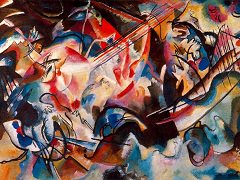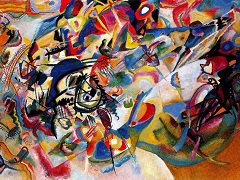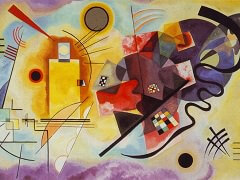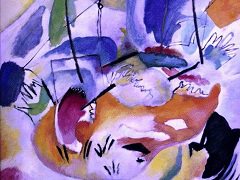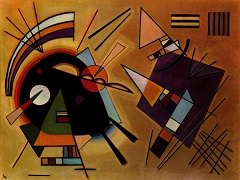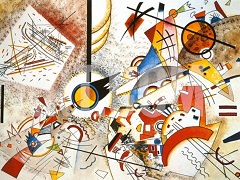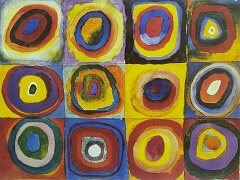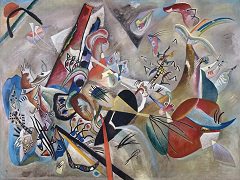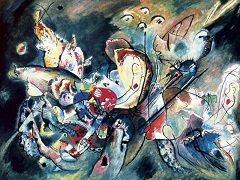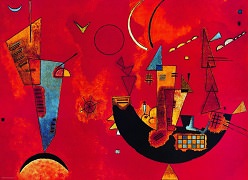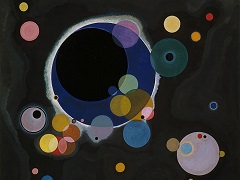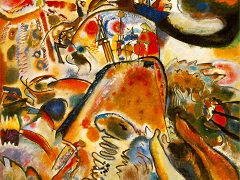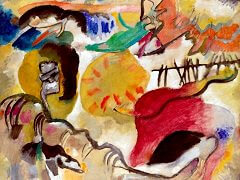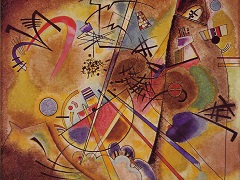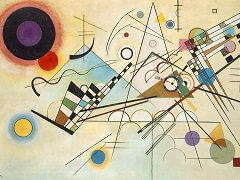Composition X, 1939 by Wassily Kandinsky
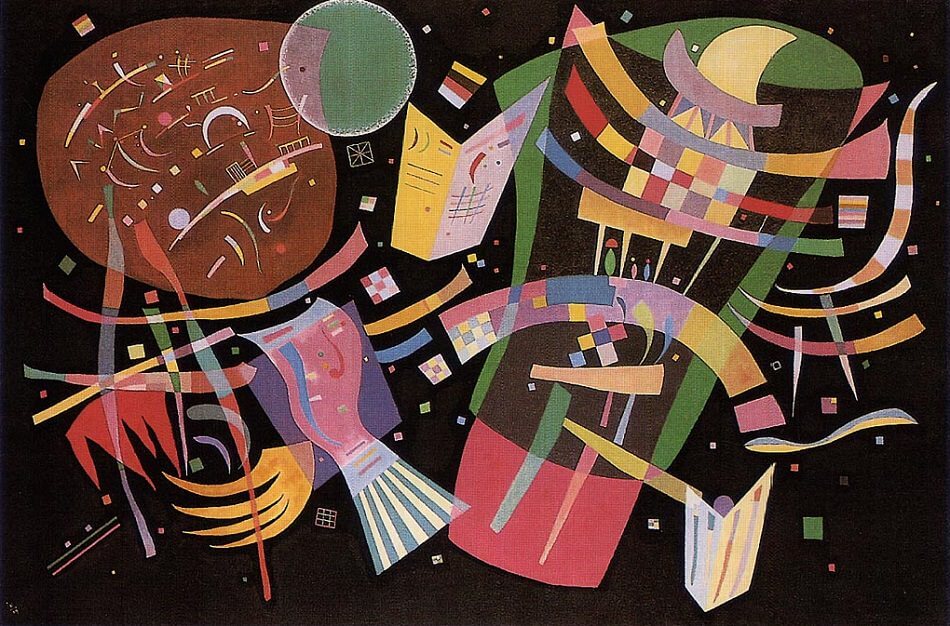
As he stated in Concerning the Spiritual In Art, Kandinsky felt that an authentic artist creating art from "an internal necessity" inhabits the tip of an upward-moving pyramid. This progressing pyramid is penetrating and proceeding into the future. What was odd or inconceivable yesterday is commonplace today; what is avant garde today (and understood only by the few) is common knowledge tomorrow. The modern artist - prophet stands alone at the apex of the pyramid, making new discoveries and ushering in tomorrow's reality. Kandinsky was aware of recent scientific developments and the advances of modern artists who had contributed to radically new ways of seeing and experiencing the world.
Composition X, 1939 and later paintings are primarily concerned with evoking a spiritual resonance in viewer and artist. As in his painting of the apocalypse by water (Composition X), Kandinsky puts the viewer in the situation of experiencing these epic myths by translating them into contemporary terms (with a sense of desperation, flurry, urgency, and confusion). This spiritual communion of viewer-painting-artist/prophet may be described within the limits of words and images.
Kandinsky often related the painting of colors and pictures on a canvas to the composition of beautiful music, and as such, named many of his paintings variants of Composition. His analogy of art as a musical composition revolved around the piano: the eyes were the hammers, the color is the keyboard, and the soul is the piano and strings. Similar to music, which is not just jumbles of notes, Kandinsky's works were not just amalgamations of non distinct shapes and colors. They were carefully arranged musical elements, precisely proportioned to evoke the maximum aesthetic and emotional response from the viewer.

